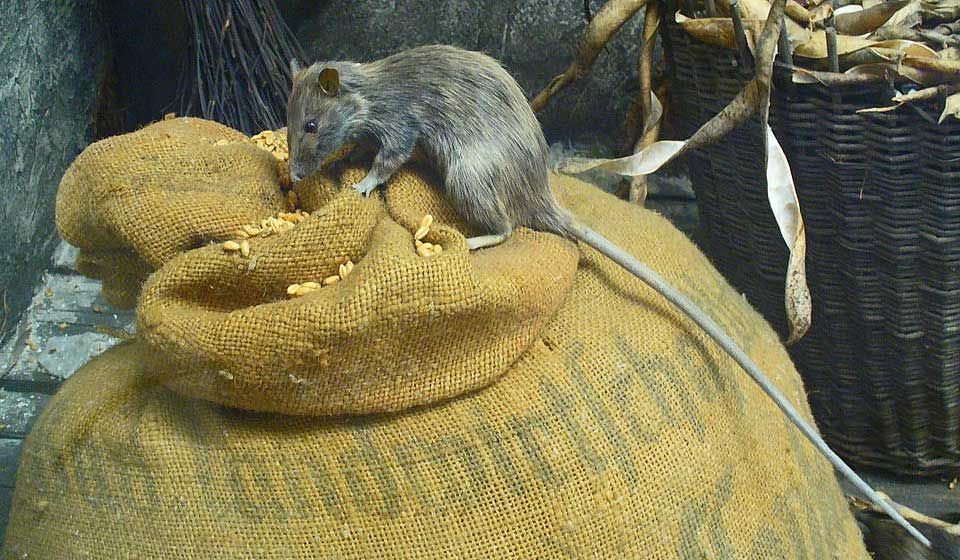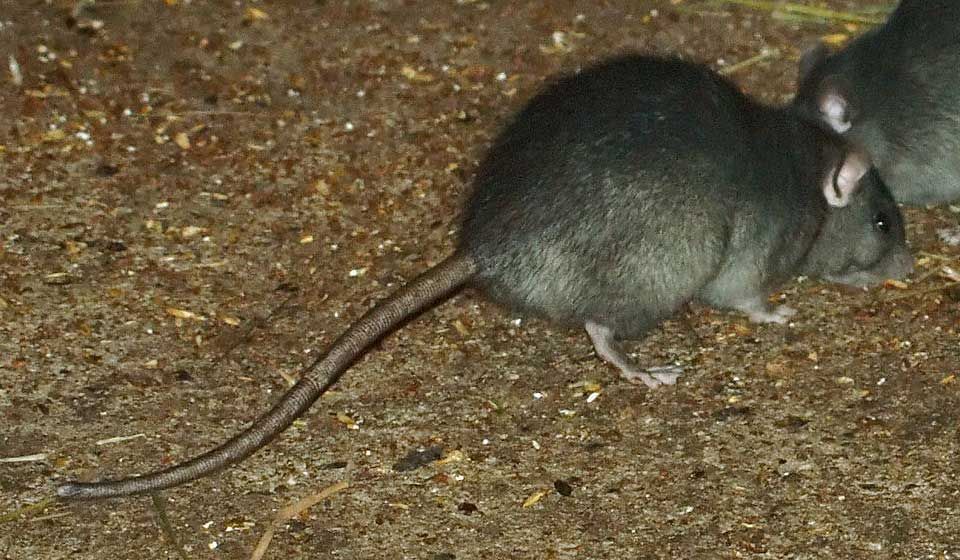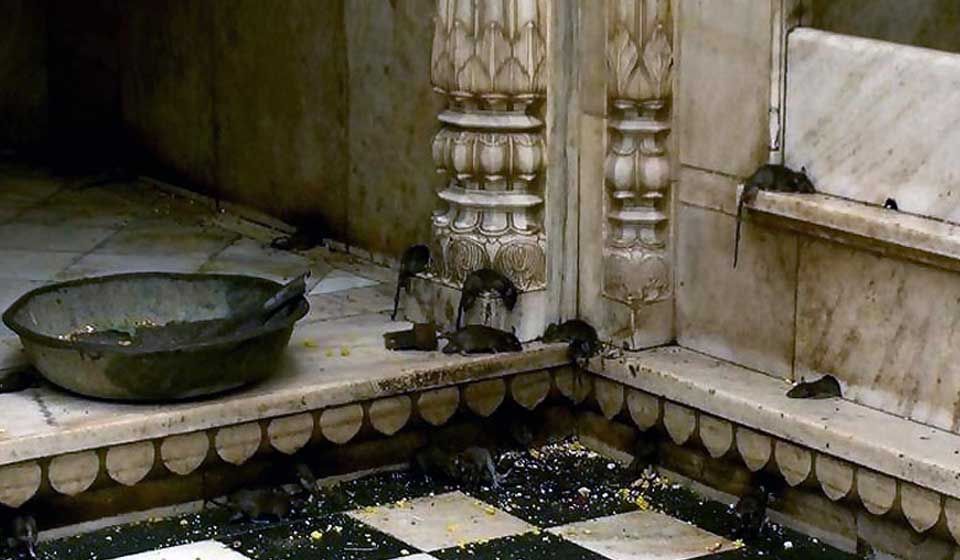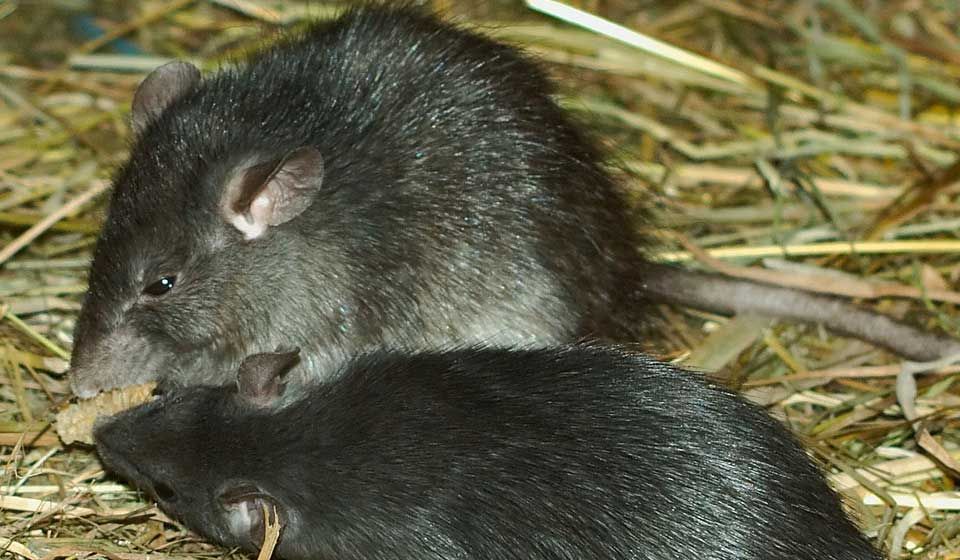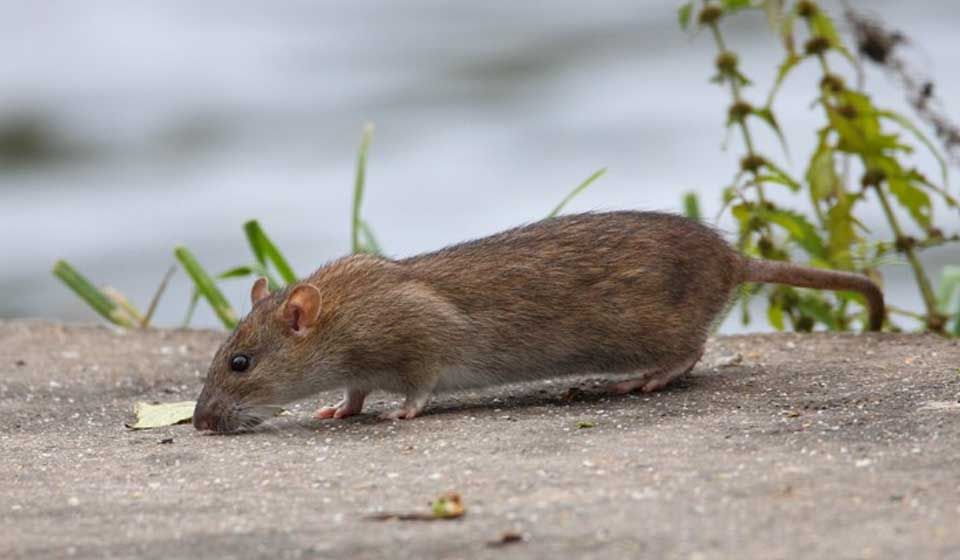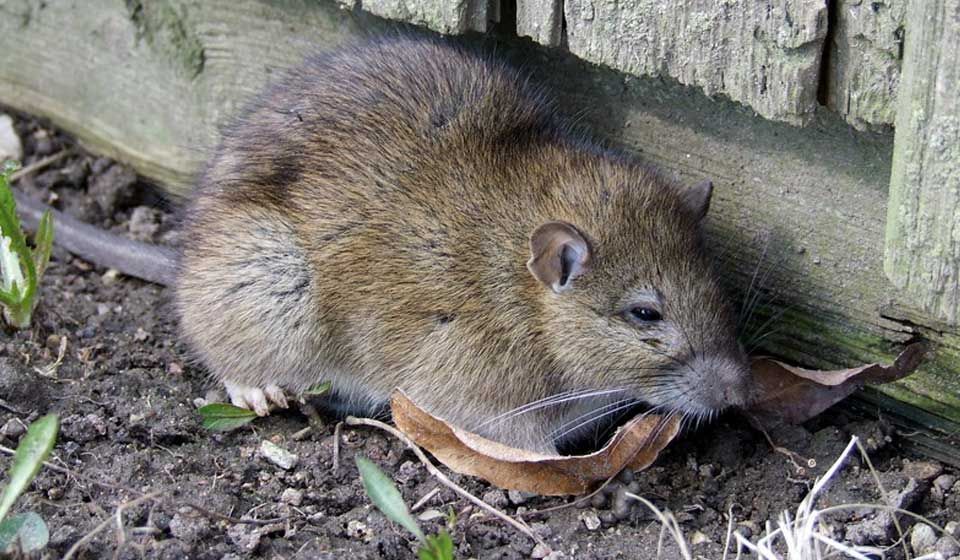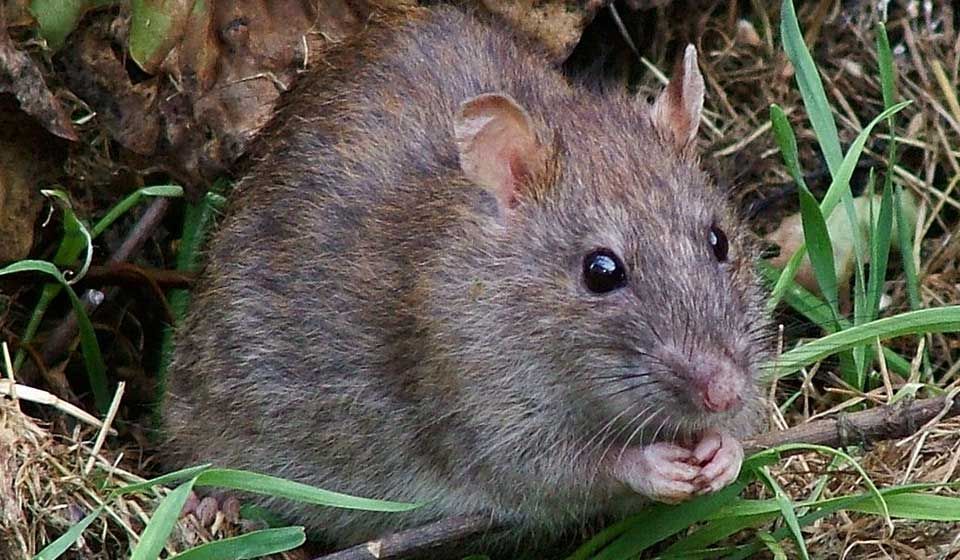
Rats
Rats are well known to spread disease, damage property and contaminate food and animal feed. If they are able to gain entry into your home or business, they can introduce other unwelcome parasites like fleas, lice and ticks.
Acting at the first sign of a suspected problem can help to drastically reduce the length of time needed to effectively control an infestation. Rats are able to breed quickly and a small problem has the potential to develop into a serious issue if left unmanaged. Discovering rats in your home or business can be very distressing. Luckily there are ways you can deter rats and prevent an infestation.
Proofing your home to deny them entry and removing easy access to food and water can really make a difference. Rats need easy and consistent access to a water source, even though they only drink between 15 - 60ml per day. They will eat almost anything available, but they do prefer to eat small amounts of a variety of different foods.Rat Prevention
- Keep foodstuffs in metal or glass containers with tight fitting lids.
- Tidy inside the house and around the garden - less clutter means less places to hide. Place outdoor rubbish bags in metal bins with securely fitted lids to stop them feeding from contents.
- Clean up pet food and bird seed debris, and store pet food in robust containers with fitted lids - preferably above ground level.
- Keep gardens free from debris. If you have a compost heap don’t include organic food waste, as this will attract them. Remove clutter and items like firewood next to your home.
- By proofing your home, you will help to make it seem less attractive to rodents. Rats will make the most of any opportunity to enter your home in the search for shelter and food. Black rats are good climbers and will happily inhabit lofts. Brown rats can climb but tend to burrow more. They are very adept at swimming in sewers and drain systems. Both species will gnaw at gaps to enlarge them enough for easy entry.
- Fit strips to the bottom of doors and weather-stripping around exterior doors as a deterrent. Young rats can squeeze through small gaps under doorways and will also use cat flaps to enter. They will enlarge gaps by gnawing to enter homes via integral garages.
- Fill holes or small openings (around utility cables or pipe work) with stainless steel wire wool and caulking or concrete. Steel or aluminium plating can be used. Rats can jump, so check up to a height of about 4 feet.
- Repair roof damage and use wire mesh to seal gaps. Trim vegetation away from your home. Rats climb along electrical cables or use overhanging branches to get into loft spaces and attics through gaps in broken roof tiles or under eaves.
- Keep toilet seat lids closed. Rats have been known to swim up damaged sewer pipes and get round u-bends in toilets. They will also use drain pipes and drainage outlets. Use tightly fitting metal grates or screens to cover drains, especially in basement areas. Check that all drain pipes are in good working order.
- Regular pest control is often the most reliable form of prevention. Rat bait stations professionally managed by Jentel Pest Management is a trusted rat deterrent and is safe to use even in locations where children or pets are present.
Signs of a rat infestation problem
- Rat Droppings
Droppings are usually found concentrated in areas as rats produce up to 40 droppings per night. Brown rat droppings are dark brown in a tapered, spindle shape about 9mm - 14mm long. They can resemble a large grain of rice. - Scratching Noises
Think you might have rats in your roof? Black rats (also known as the roof rat) are agile climbers and can easily gain access into loft spaces and upper floors of buildings. Hearing scratching noises at night from above may suggest their presence. Brown rats on the other hand, are less adept climbers. You may hear them scurrying under decking, sheds and floorboards. They are more likely to be identified by a grinding noise they make with their teeth known as bruxing. - Footprints (running tracks)
Rats leave foot and tail marks in dusty, less-used areas of buildings. Shining a strong flashlight at a low angle should reveal tracks clearly. To establish if an infestation is active, sprinkle fine flour or talc along a small stretch of floor near the footprints and check for fresh tracks the next day. - Rub Marks
Rats use established routes along skirting boards and walls due to their poor eyesight. Grease and dirt on their bodies leave smudges and dark marks on both objects and surfaces they repeatedly brush against. These marks may indicate rodent activity, but as smears may remain for a long period of time, they are not a good gauge of an active infestation. - Damage
Rats have teeth that grow continuously. They need to gnaw on wood and plastic to keep them trim. They have the potential to cause fires by chewing through electrical cables. You may also notice ripped food packaging, as rats tear open food, leaving visible teeth marks. - Nests
Rats build nests in warm, hidden places using shredded material such as newspaper and fabrics. Nests will often contain young rats and are usually located close to a food source. Check behind and under appliances, such as fridges and freezers in or near your kitchen. - Burrows
Brown rats are well known for digging and excavating extensive burrow systems for shelter, food storage and nesting. Look for burrows in compost heaps, under decking or garden sheds, or in garages.
Do I need professional rat pest control assistance?
If you have spotted signs of a rat infestation, such as droppings or an unpleasant urine smell, it is time to get professional treatment. Regular pest control is often the most reliable form of prevention. Rat bait stations professionally managed by Aerobeam Professional Pest Management is a trusted rat deterrent and is safe to use even in locations where children or pets are present.
Black Rat
Black rats can be found in coastal towns and in many urban environments across Australia.
Black rats are incredibly agile and very good climbers. Their preferred food is moist fruits. Black Rats will eat around 15g of food a day and drink 15ml.
Black rats produce 5–10 young per litter, and have between 3–6 litters a year. The gestation period is about 3 weeks. It only takes between 12–16 weeks from birth for them to reach sexual maturity.
Brown Rat
Brown rats usually prefer ground living and burrowing, but sometimes they can be known to climb.
Preferred food is cereals, although they are omnivorous. They will eat around 30g of food a day and drink 60ml.
Rats have 7–8 young per litter, and between 3–6 litters a year. The gestation period is about 3 weeks. It only takes 10–12 weeks from birth to reach sexual maturity.
